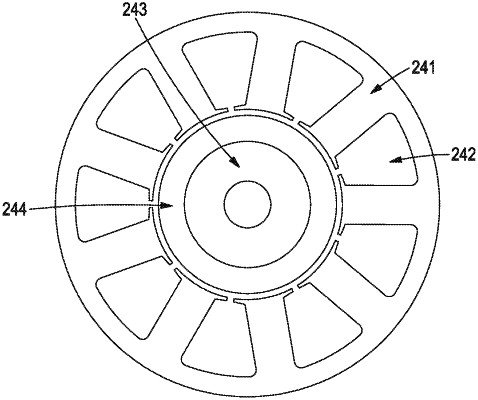| CPC H02P 6/181 (2013.01) [G01R 15/181 (2013.01); H02P 6/182 (2013.01); H02P 21/141 (2013.01); H02P 21/18 (2016.02); H02P 21/28 (2016.02); H02P 2203/05 (2013.01)] | 16 Claims |

|
1. A control system for an electrical motor comprising a rotor, a stator having a plurality of phase windings, and an inverter for applying voltage to the plurality of phase windings by connecting individual phase windings to a first or second voltage level, the control system configured:
a) to measure a first rate of change of current in a first phase winding, of said plurality of phase windings, connected to the first voltage level;
b) to measure a second rate of change of current in a second, different phase winding connected to the first voltage level;
c) to calculate a difference between the first and second rate of change of current to obtain a first signal, A;
d) to repeat steps a) to c) for one of (i) the first and a third phase windings or (ii) the second and third phase windings when both phase windings are connected to the same first or second voltage level to obtain a second signal, B;
e) to use the first, second and third signals, A and B, to obtain data related to a position of the rotor and to use the data related to the position of the rotor to determine the position of the rotor relative to the stator;
f) to operate the motor in a low speed regime; and
g) while operating in the low speed regime, to measure a stator current in the phase windings of the stator arising from an application of a stator voltage, and to calculate a motor characteristic of the electrical motor from positions of the rotor, the stator voltage, the stator current, and a resistance of the phase windings.
|